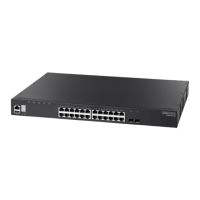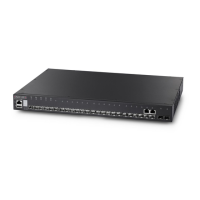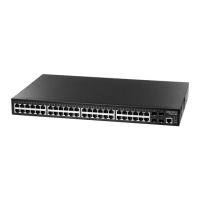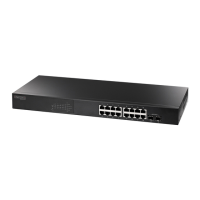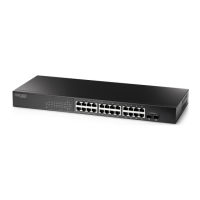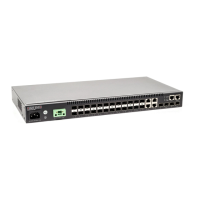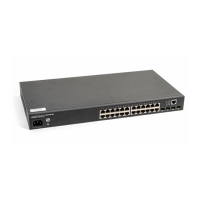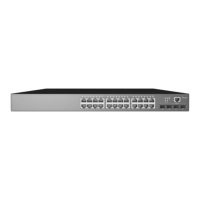Chapter 13
| Basic Administration Protocols
Power over Ethernet
– 419 –
power is provided to the port only if the switch can drop power to one or
more lower-priority ports and thereby remain within its overall budget.
■
If a device is connected to a port after the switch has finished booting up
and would cause the switch to exceed its budget, power will not be
provided to that port regardless of its priority setting.
■
If priority is not set for any ports, and there is not sufficient power to supply
all of the ports, port priority defaults to Port 1, Port 2, Port 3 ... Port 24
13
/
48
14
, with available power being supplied in that sequence.
■
If priority is not set for any ports, and PoE consumption exceeds the
maximum power provided by the switch, power is shut down in the reverse
sequence, starting from Port 24/48.
Parameters
These parameters are displayed in the web interface:
◆ Port – The port number on the switch.
◆ Admin Status – Enables PoE power on a port. Power is automatically supplied
when a device is detected on a port, providing that the power demanded does
not exceed the switch or port power budget. (Default: Enabled)
◆ Mode – Shows whether or not PoE power is being supplied to a port.
◆ Priority – Sets the power priority for a port. (Options: Low, High, or Critical;
Default: Low)
◆ Power Allocation – Sets the power budget for a port. (Range: 3000-30000
milliwatts; Default: 30000 milliwatts)
◆ Power Consumption – Current power consumption on a port.
Web Interface
To set the PoE power budget for a port:
1. Click Administration, PoE, PSE.
2. Enable PoE power on selected ports. Set the priority and the power allocation.
3. Click Apply.
13. ECS4620-28P
14. ECS4620-52P
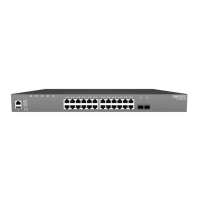
